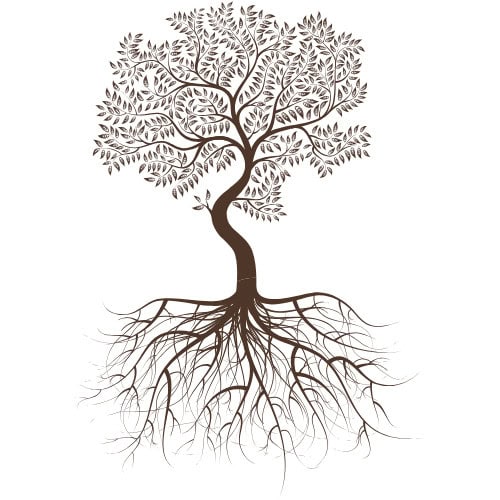In the 2022 midterm elections, Arkansas ranked last, 50th out of 50 states, in voter turnout. Among young Arkansans, the numbers were even more alarming: only 33% voted, the lowest youth turnout in the country. That statistic isn’t just disappointing — it’s a warning sign.
Written by Salma Eid, High School Senior
As a high school student and a Summer Youth Ambassador with Get Loud Arkansas, I spent months trying to understand the youth voting gap. I attended community events, spoke with students, distributed voter registration forms, and answered questions about the registration process. And again and again, I heard the same thing: “I want to vote, but I don’t know how.” Or worse: “I don’t think it even matters.”
Those conversations showed me something that the data backs up: this isn’t apathy.
It’s exclusion.
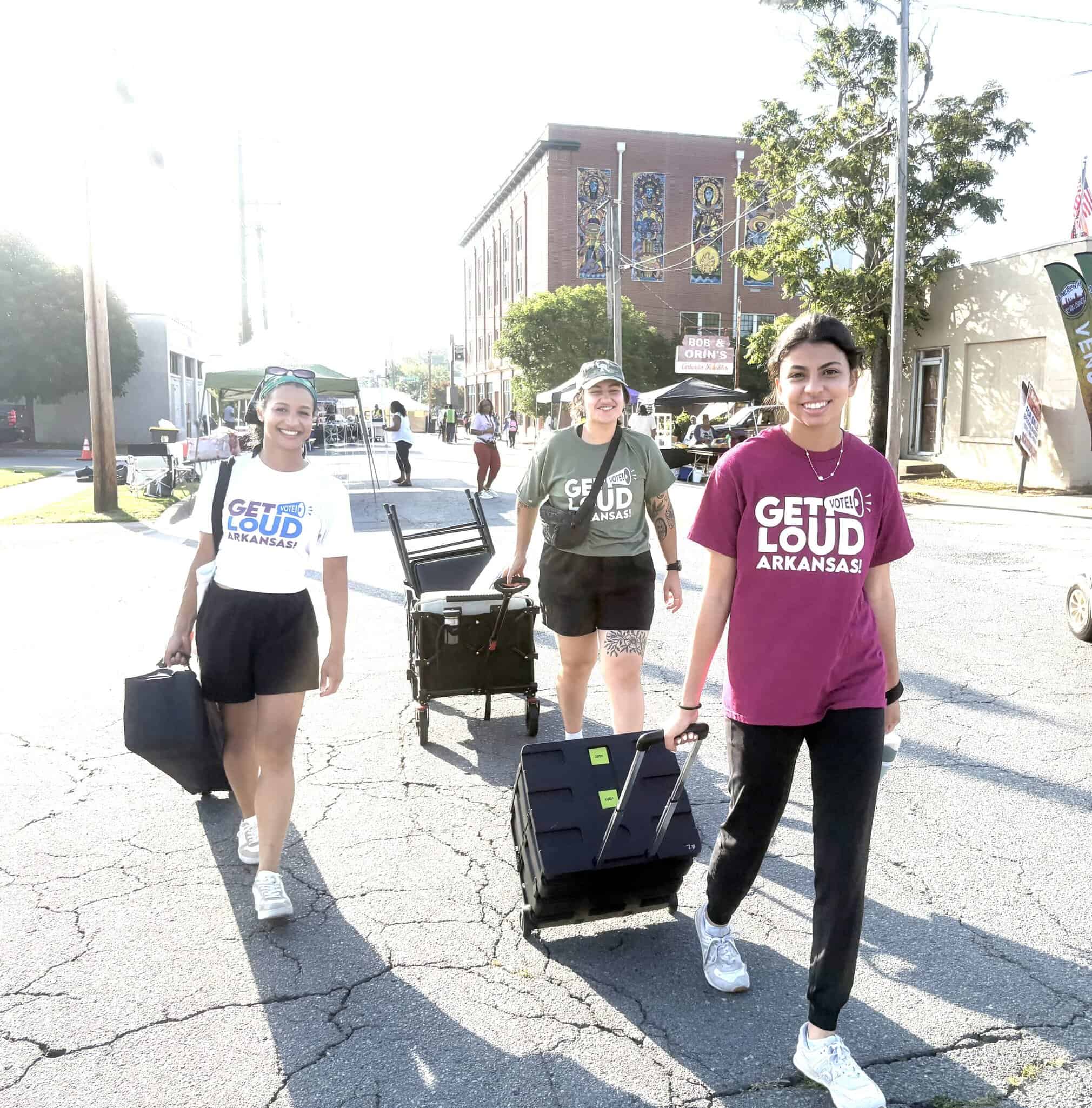
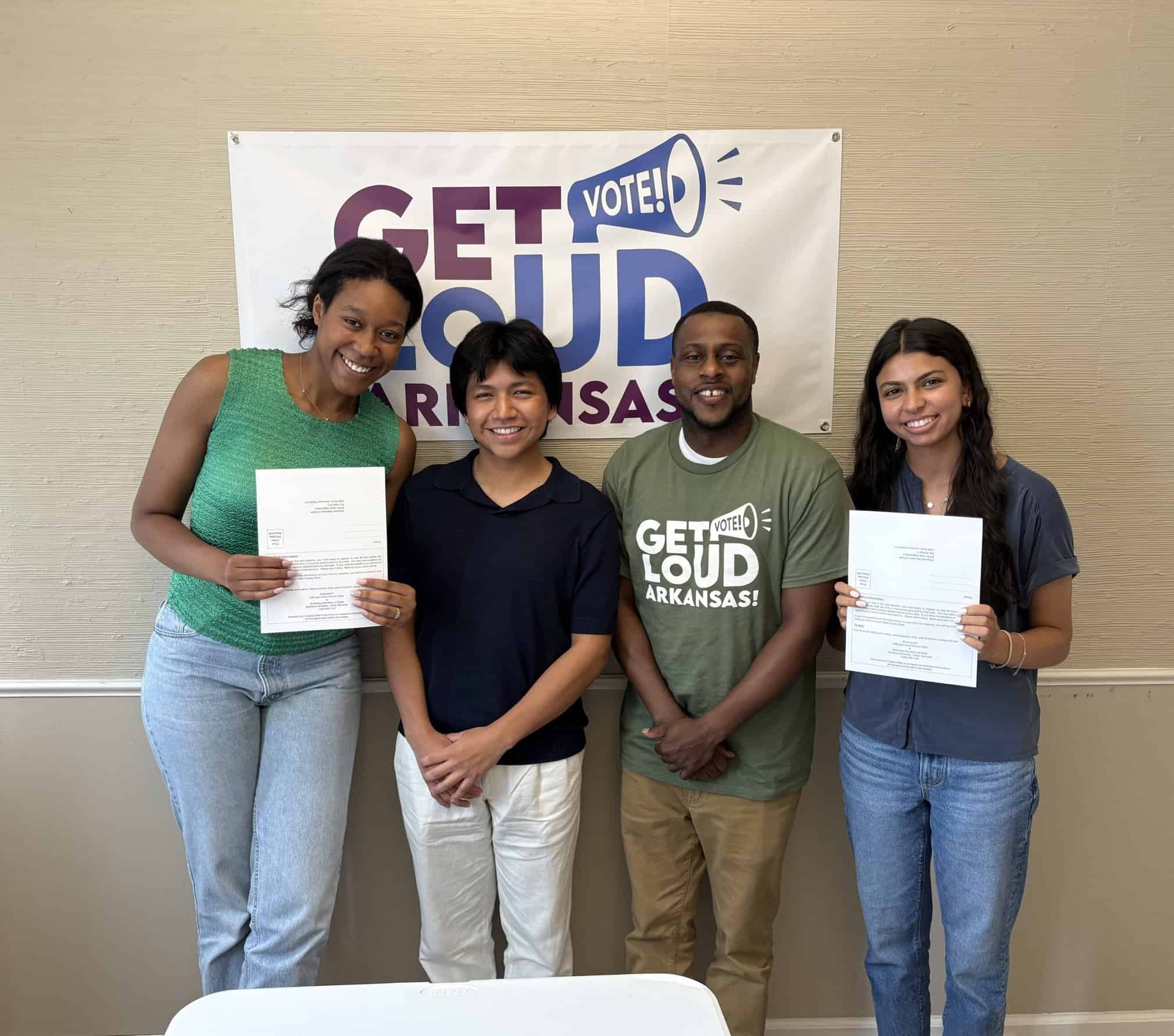
Left: Salma leads the Get Loud Arkansas voter registration team to a community event. Pictured left to right: Summer Youth Ambassadors Lexi George, Marcus Garcia, Get Loud Arkansas Civic Engagement Coordinator Richard Walton, and Summer Youth Ambassador Salma Eid. To start the summer program, the teens registered to vote in Pulaski County.
We often hear that youth don’t vote because they don’t care. But that couldn’t be further from the truth. Young Arkansans care deeply about climate change, student debt, jobs, justice, and their futures. The issue isn’t disinterest. It’s a lack of access.
Young people in Arkansas are often called “future leaders,” but that framing is limiting. It implies that we don’t belong in today’s decision-making spaces — that we should wait our turn. But from what I’ve seen, we’re already leading, already organizing, already showing up for our communities.
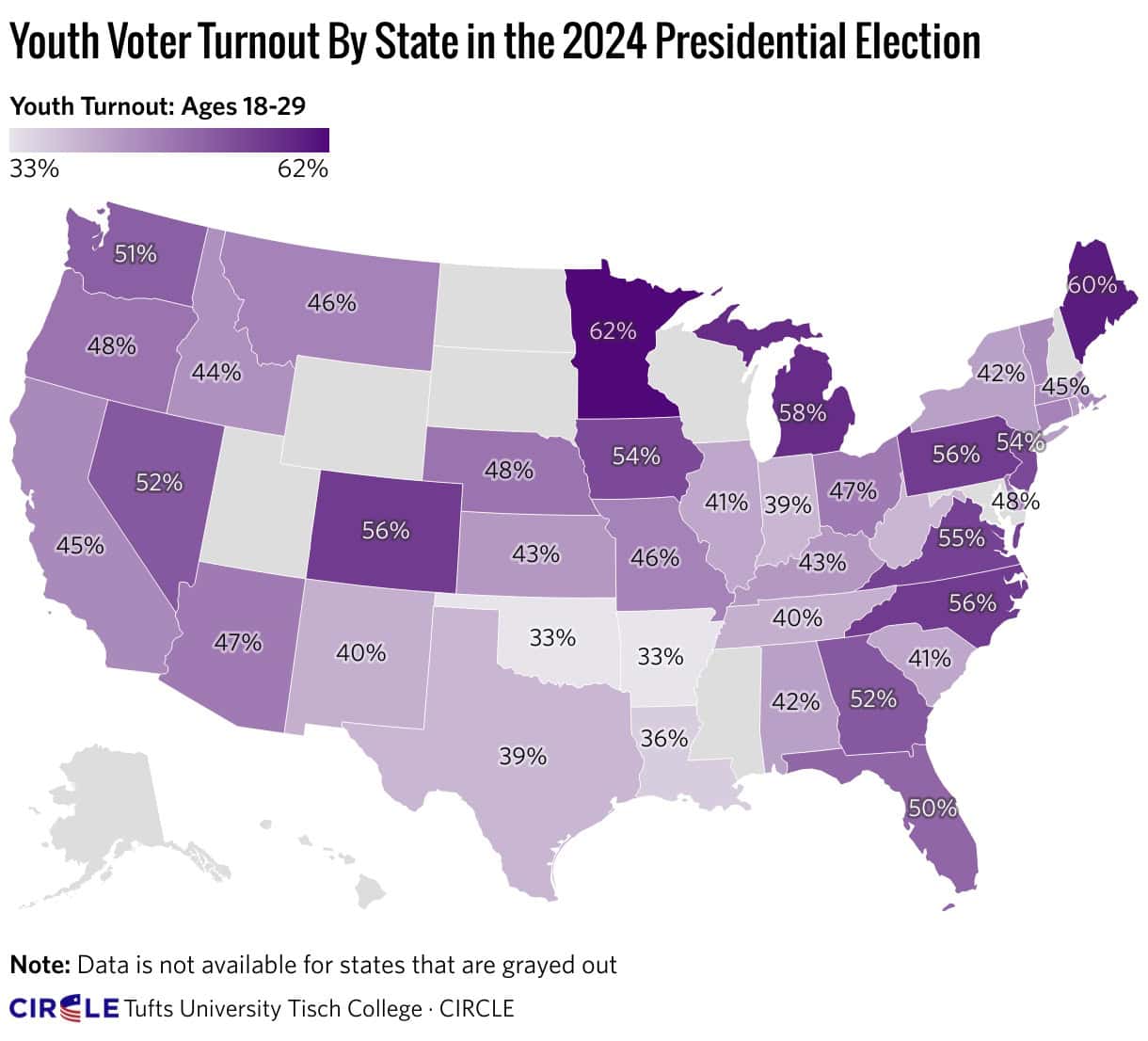
What we lack isn’t willpower. We lack opportunity.
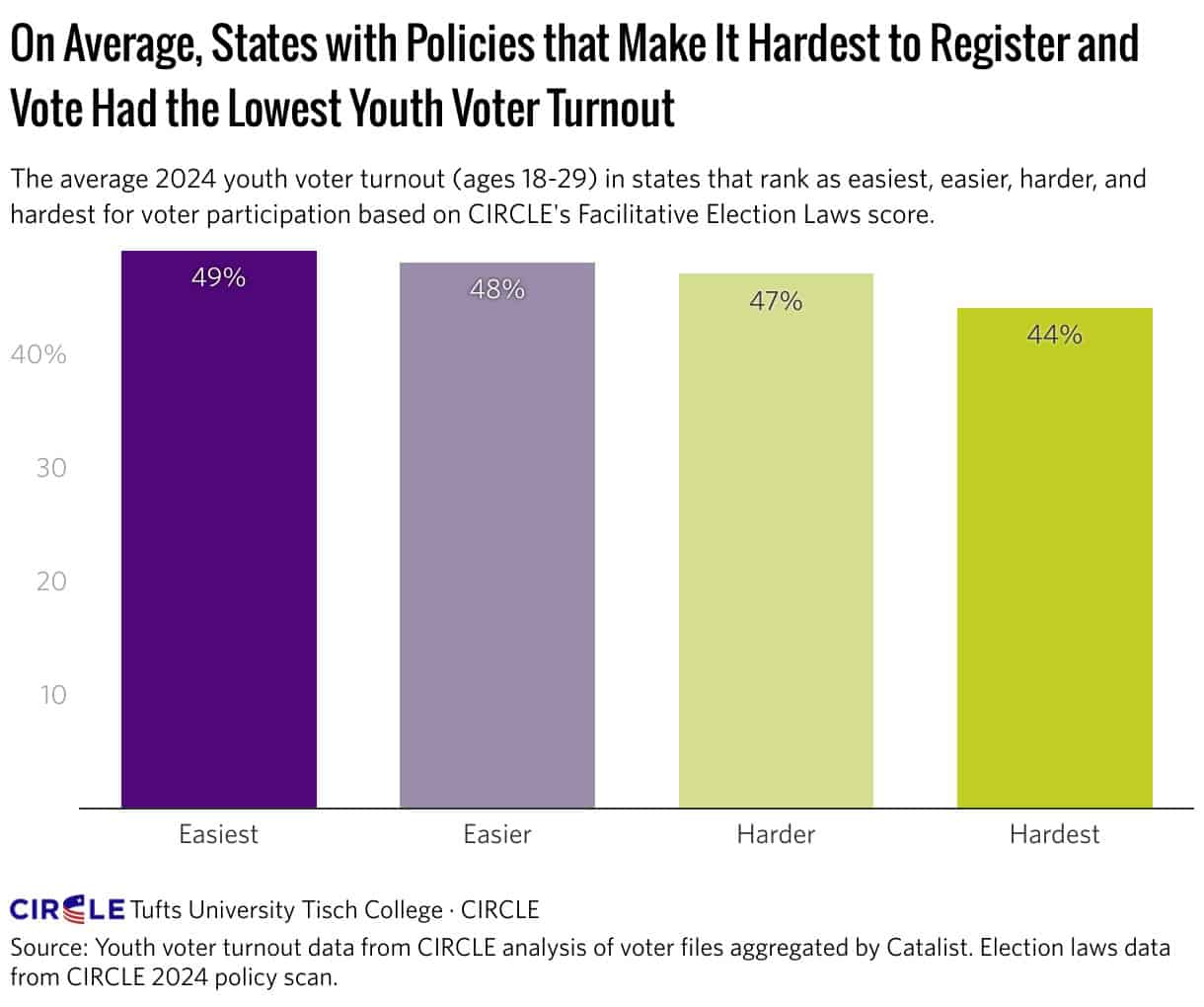
Arkansas has no same-day registration, making it harder for newly eligible voters — often youth — to participate. Absentee voting is complex and restrictive, early voting is limited (especially in rural areas), and voter ID laws can make it difficult for students without official government-issued IDs.
Research from Tufts University’s CIRCLE project confirms what I witnessed on the ground: states with easier voting procedures have two to three times higher youth turnout than states like Arkansas. It’s not a coincidence. The more hurdles you place in front of voters, the fewer will make it through.
If we’re not teaching young people how democracy works, how can we expect them to believe in it?
This isn’t just about laws. It’s about trust. Less than 40% of Gen Z believe American democracy can solve today’s challenges, and just 16% believe it works for young people. That’s not just apathy—it’s a learned distrust, shaped by feeling ignored, underrepresented, and powerless.
Civic education is another huge gap. In too many Arkansas schools, especially in rural or underfunded areas, students graduate without ever learning how to register, what’s on a ballot, or how to engage in their local communities. If we’re not teaching young people how democracy works, how can we expect them to believe in it?
And then there’s the reality of daily life. Many youth are balancing school, work, and family responsibilities — especially in a state like Arkansas, where the youth poverty rate is above the national average. Voting takes time, transportation, and flexibility — all things that too many young people don’t have.
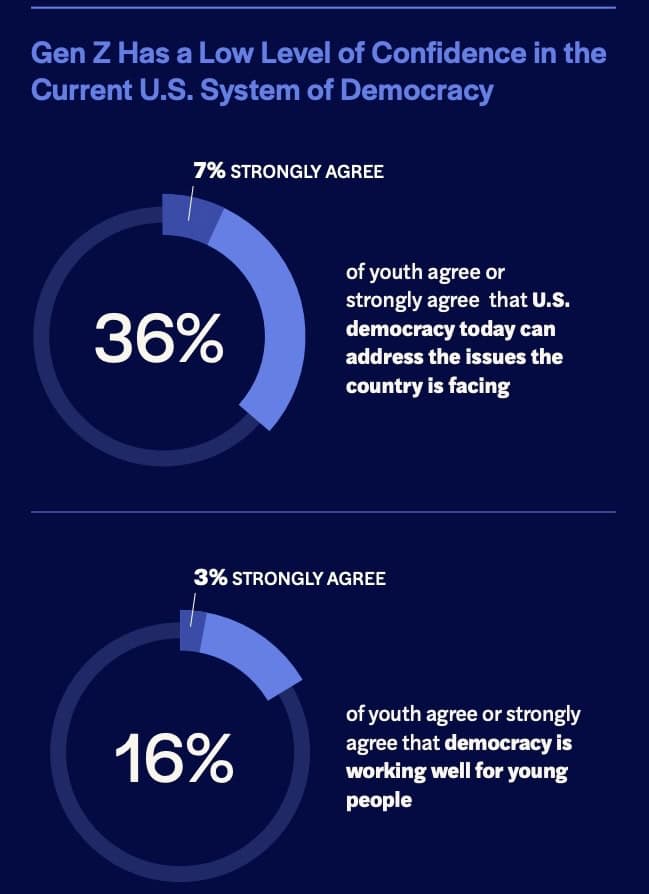
But more than anything, we need to shift how we view young people.
When we see low youth turnout, the usual explanation is ‘apathy.’ But the data tells a different story. Young Arkansans do care about numerous issues, but they’re navigating real barriers: legal, logistical, educational, and emotional. This isn’t indicative of apathy but rather exclusion. And fixing it requires real investment: in voting access, civic learning, outreach, and — most importantly — in listening to youth voices and treating them as full participants in democracy.
We’re not just “in training.” We’re not token voices. We’re not a future generation waiting to inherit a broken system. We’re already here. And when we’re given responsibility and support, we organize. We mobilize.
And we vote.
Low youth turnout isn’t a sign of disinterest. It’s a sign of structural failure. But it doesn’t have to be this way. I’ve seen firsthand how energized young Arkansans become when they’re given the knowledge and tools to engage. When the barriers are removed, we show up — not just for ourselves, but for our communities.
Youth engagement is not a future hope. It’s a present power.
Salma Eid and Interim Director Kathy Webb of Get Loud Arkansas discuss youth voting on KARK’s “Arkansas Week,” Sept. 7, 2025.

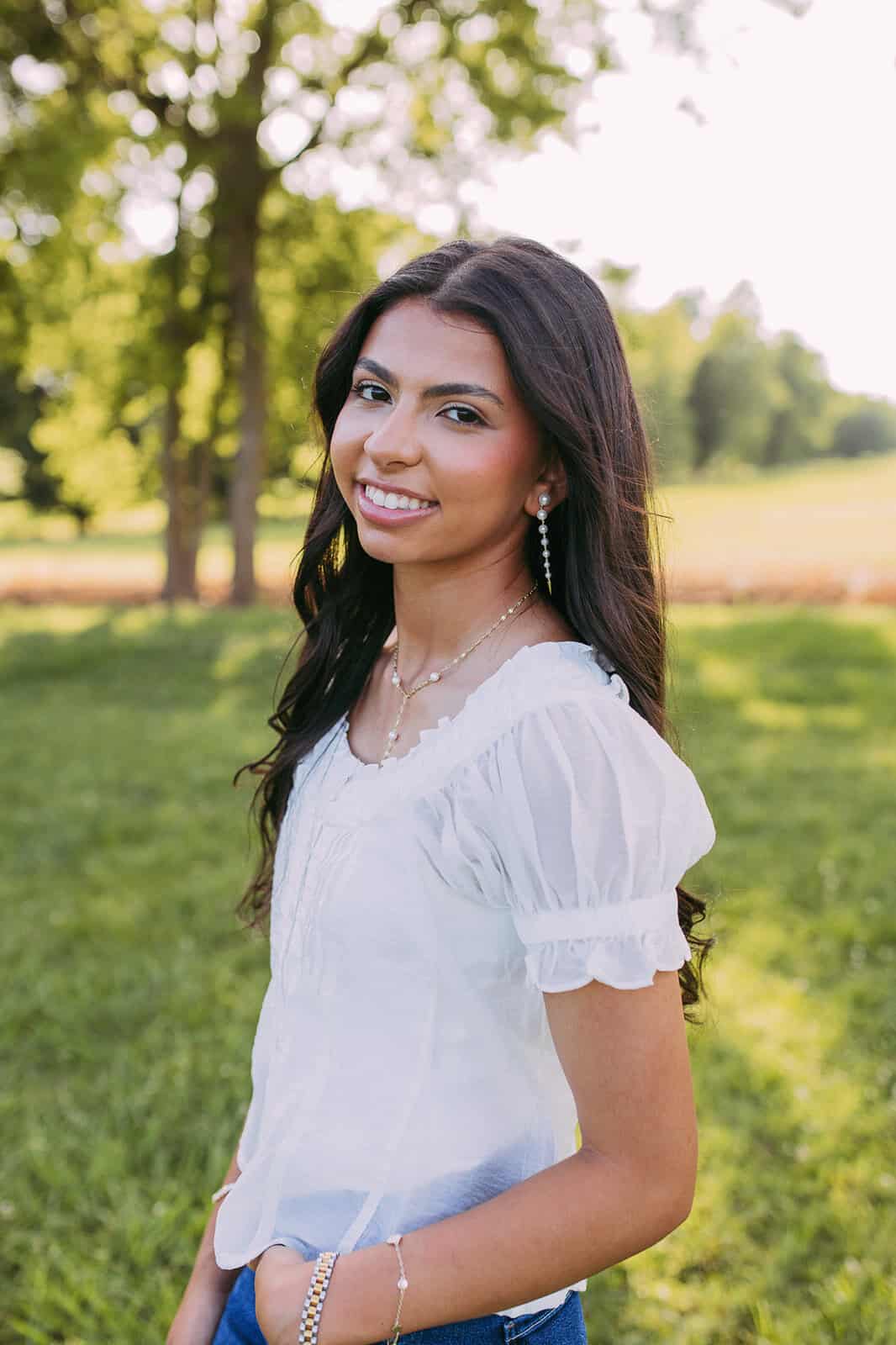
Salma Eid is a 17-year-old senior at Pulaski Academy in Little Rock. She enjoys spending time with her family, baking, writing, and exploring new opportunities to learn and grow. Salma values creativity, curiosity, and making a positive impact in her community.

This story was shared by a member of our community. We believe everyone has a story worth telling, and we’d love to hear yours. Join our community of storytellers. Share your story with us at in**@******ng.org or use our submission form.
